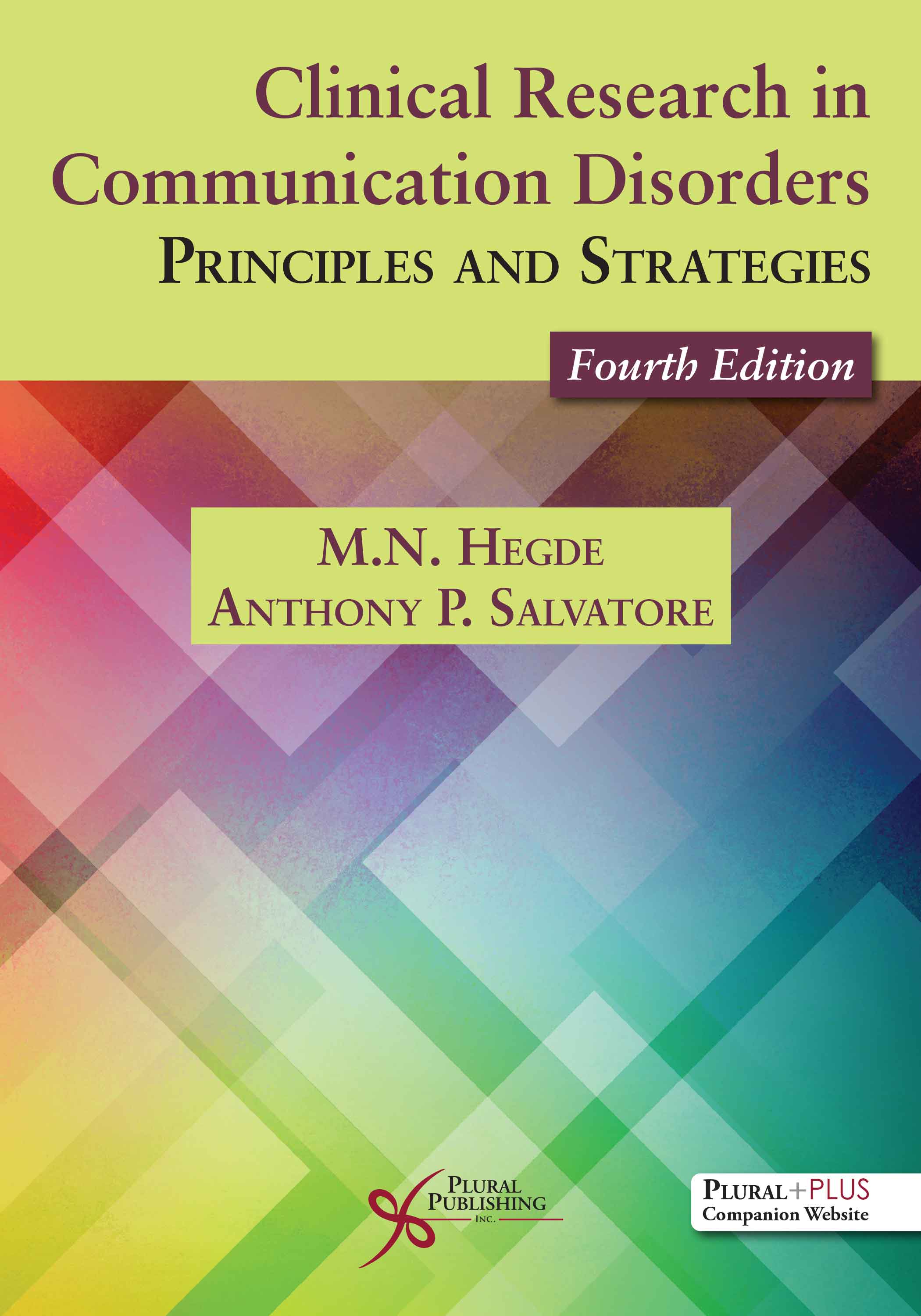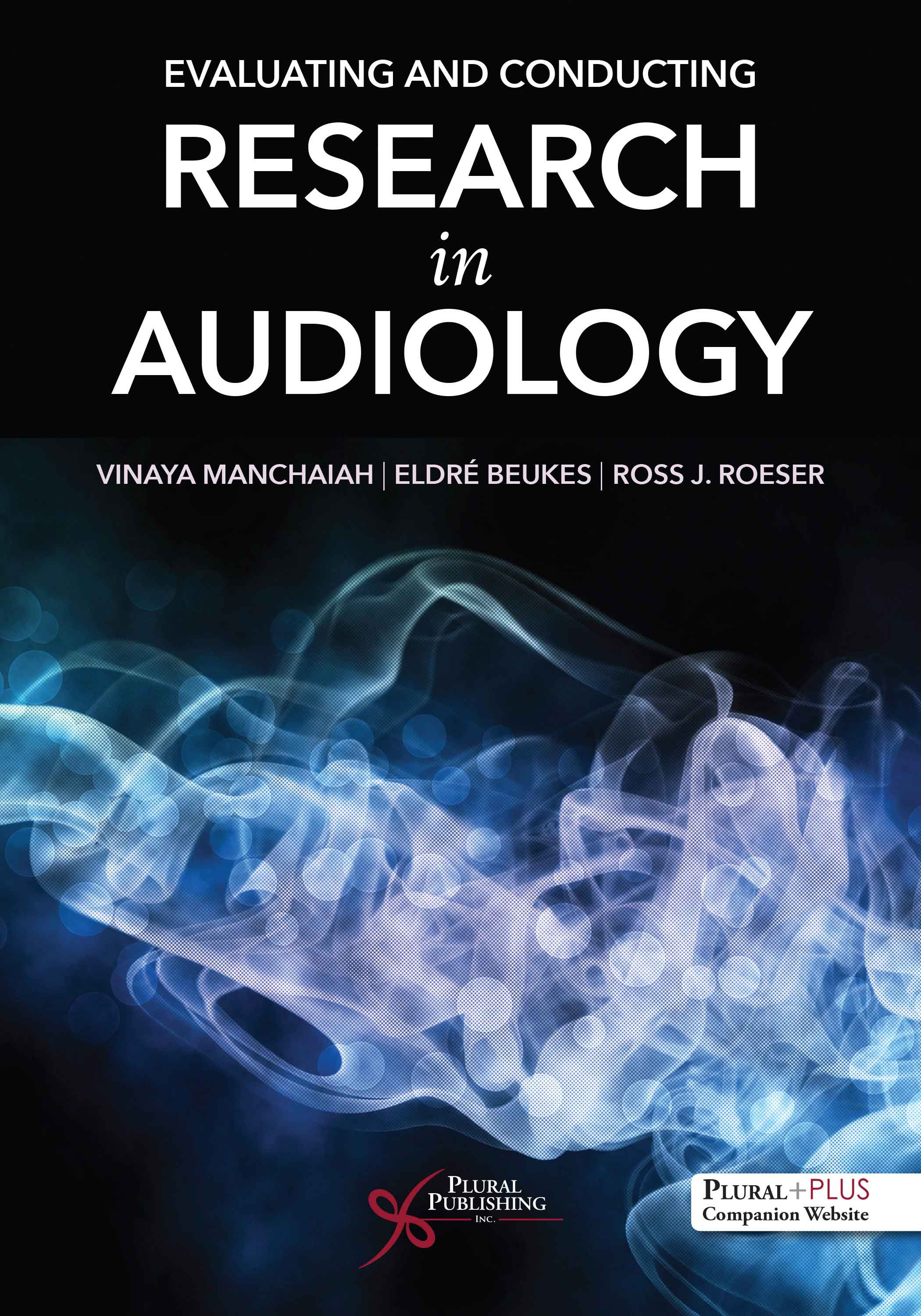
Consuming and Producing Research in Communication Sciences and Disorders: Developing Power of Professor
First Edition
Robert Goldfarb
Details: 369 pages, B&W, Softcover, 7" x 10"
ISBN13: 978-1-63550-067-7
© 2021 | Available
For Instructors
Purchase
Consuming and Producing Research in Communication Sciences and Disorders is an exciting new textbook designed for undergraduate research methods in communication sciences and disorders (CSD) programs. It is also appropriate for first-year graduate students taking research methods courses in speech-language pathology and audiology. The text guides students in attaining the competencies required to consume, produce, and disseminate research; and students will have the knowledge and skills that are necessary and sufficient to conduct research as is consistent with the duties of an academic professor. The text reviews what obligations an individual, professor or not, has before being permitted to do research. The emphasis is on clinically-oriented professionals who can perform the research associated with professors.
Part I on Consuming Research in CSD includes academic-clinical integration of research, as well as information required for consumption of research such as research ethics, the scientific method, types of research, and how to critique a journal article and a diagnostic test. Part II on Producing Research in CSD helps guide the undergraduate student in producing a capstone project or senior thesis and the master’s student in producing a graduate thesis or research project. Part II also addresses mentoring, the Institutional Review Board, and conducting academic and clinical research. Part III addresses Disseminating Research in CSD, from the traditional (presenting and publishing academic and clinical research) to the non-traditional (marketing, social media, and new technologies).
Key Features
- Each chapter begins with an Introduction and Learning Objectives to set the scene and prepare the student for what is covered.
- Advanced Study Questions end each chapter and allow the student to review their skills.
- Boxes throughout the text highlight key points and explore topics in more depth.
- A PluralPlus companion website includes PowerPoint lecture slides, a sample syllabus, and quizzes for instructors and supplementary resources for students.
PluralPlus Online Ancillary Resources
For Instructors: PowerPoint lecture slides, quizzes, and a sample syllabus
For Students: Video links, statistics quiz, and additonal study aids
Review
"The 15 chapters are grouped into three sections on consuming, producing, and disseminating research in communication sciences and disorders. The book includes basic information about research, ethics, and the research process, including aspects of evaluating research articles. It also covers the process aspects of producing research. One unique feature is the discussion of the mentor/mentee relationship. The book describes the practicalities of dissemination, including types of research writing and presentation."
—Suzanne M Welty, MA, EdD-CCC, Biola University, in Doody's Reviews (October 2019)
Robert Goldfarb Discusses Consuming and Producing Research in Communication Sciences and Disorders
Introduction
Acknowledgments
Reviewers
Part I. Consuming Research in CSD
Chapter 1. Developing Power of Professor: The Nature of Research in CSD
Introduction
Why Professors and Clinicians Do Research
Research and Development (R & D) versus Objective Research
Clinical Research: A Case Study
Skepticism
Power of Professor
References
Chapter 2. Academic-Clinical Integration of Research
Introduction
Types of Research Evidence
Best Practices and Evidence-Based Practice
A Model of Therapy
Some Clinical Research Concerns
Advanced Study
References
Chapter 3. Ethics of Research
Introduction: Principles of Research
The Rules of Ethics
Unintended Consequences of Research
NIH/CITI Online Training Course
The Belmont Report
Ethical Blindness and Society’s Responses
The Tudor Study
AAA and ASHA Codes of Ethics
Health Insurance Portability and Accountability Act of 1996 (HIPAA)
Conclusion
Advanced Study
References
Chapter 4. The Scientific Method
Introduction
The Scientific Method
The Rules of Science
The Scientific Method Versus Common Sense or Conventional Wisdom
The Scientific Method and Pseudoscience
Conclusion
Advanced Study
References
Chapter 5. Types of Research
Introduction
Experimental, Quasiexperimental, and Nonexperimental Designs
Single-Subject and Case Studies
Proof-of-Concept and Pilot Studies; Phase O, I, II, III, and IV Trials
Group Designs
Retrospective Research
Survey Research
Longitudinal Studies (Developmental Research)
Translational Research
Advanced Study
References
Chapter 6. Really Basic Statistics
Introduction
Some Statistical Concepts
Descriptive Statistics: Measures of Central Tendency and Dispersion
All You Need Are Sums of Squares
Presenting the Data: Frequency Distributions, Histograms, Line Graphs
Recipe for Repeated Measure Analysis on SPSS
Definitions of Terms
Statistics of the Future: Bayesian Inference
Advanced Study
References
Chapter 7. Journal Article Critique
Introduction
Structure of a Journal Article
Threats to Internal and External Validity of Experiments
Peer Review
Advanced Study
References
Chapter 8. Diagnostic Test Critique
Introduction
Levels of Evidence in Diagnostic Tests
Problems in Diagnosis: Dumping It in the Chocolate
The Diagnostic Test Manual
Reliability and Validity of Tests and Measurements
Choosing Which Test to Give
Advanced Study
References
Part II. Producing Research in CSD
Chapter 9. Mentoring
Introduction
What Is the Mentor-Protégé or Mentor-Mentee (Hereafter Called Mentor-Student) Relationship?
Does Mentoring Work?
Do Being Older, Having More Experience, and Having Greater Professional Authority Qualify an Individual To Be a Mentor?
What Are the Ethical Concerns of a Relationship with a Large Power Differential?
What Kinds of Mentoring Can You Expect?
What Is the ASHA S.T.E.P. Mentor Model?
How Does Gender Affect the Mentor-Mentee Relationship?
Are e-Supervision and e-Mentoring the Wave of the Future?
Advanced Study
References
Chapter 10. Institutional Review Board (IRB) Research Approval
Introduction
Overview
History of the IRB
Completing an IRB Review Form
An Example from CSD
Advanced Study
References
Chapter 11. Conducting Clinical Research
Introduction
Developing a Clinical Hypothesis
Setting Goals
Data Collection
Experimental Design: Case Report or Single-Subject Multiple Baseline
Disseminating Results
Advanced Study
References
Chapter 12. Conducting Academic Research
Introduction
Selecting a Research Topic and Finding a Mentor
Capstone Projects
The Master’s Thesis
Doctor of Audiology (AuD) Research Requirements
PhD in Speech-Language-Hearing Sciences Research Requirements
Clinical Doctorate in Speech-Language Pathology (SLP-D) Research Requirements
Doctor of Clinical Science (ClinScD/CsCD) Research Requirements
Funding Sources
Advanced Study
References
Part III. Disseminating Research in CSD
Chapter 13. Dissemination by Publication
Introduction
The Article in a Peer-Reviewed Journal
Books and Portions of Books
Advanced Study
References
Chapter 14. Oral Presentation of Research
Introduction
Conference Presentations
Practice-Based Networks
Educational Technology
Securing Funding for Travel and Expenses
Advanced Study
References
Chapter 15. Nontraditional Dissemination of Research
Introduction
Challenges to Dissemination
Support Groups for Communication Disorders
Advocating for the Professions
In the News
Conclusion
Advanced Study
References
Index
Purchase of Consuming and Producing Research in Communication Sciences and Disorders: Developing Power of Professor comes with access to supplementary student and instructor materials on a PluralPlus companion website.
STUDENTS:
To access the student materials, you must register the access code printed on the inside front cover of your textbok on the companion website.
INSTRUCTORS:
To access the instructor materials, you must contact Plural Publishing, Inc. to be verified as an instructor and receive your access code.
Email: instructormaterials@pluralpublishing.com
Tel: 866-758-7251 (toll free) or 858-492-1555
*Note for students: If you have purchased this textbook used or have rented it, your access code will not work if it was already redeemed by the original buyer of the book. Plural Publishing does not offer replacement access codes for used or rented textbooks.

Clinical Research in Communication Disorders: Principles and Strategies
Fourth Edition
M.N. Hegde, Anthony P. Salvatore
Details: 526 pages, B&W, Softcover, 7" x 10"
ISBN13: 978-1-63550-187-2
© 2020 | Available

Translational Speech-Language Pathology and Audiology: Essays in Honor of Dr. Sadanand Singh
First Edition
Robert Goldfarb
Details: 392 pages, B&W, Softcover, 7" x 10"
ISBN13: 978-1-59756-445-8
© 2012 | Available

Ethics: A Case Study from Fluency
First Edition
Robert Goldfarb
Details: 227 pages, B&W, Softcover, 6" x 9"
ISBN13: 978-1-59756-010-8
© 2006 | Available

Evaluating and Conducting Research in Audiology
First Edition
Vinaya Manchaiah, Eldré W. Beukes, Ross J. Roeser
Details: 400 pages, B&W, Softcover, 7" x 10"
ISBN13: 978-1-63550-190-2
© 2022 | Available

